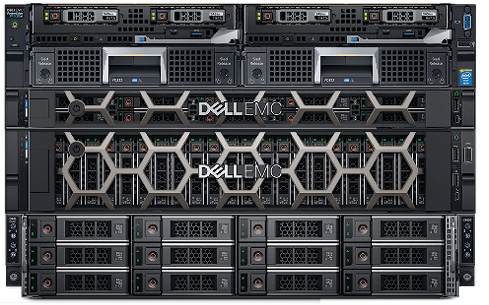Latest News
June 1, 2018
OTTO Motors builds self-driving vehicles equipped to perform the world’s dullest, dirtiest, and most dangerous jobs. The company’s founders believe we’re on the verge of an era in which the world will be profoundly impacted by robotics and self-driving vehicles. OTTO’s self-driving vehicles are deployed across many industries including aerospace, healthcare, automotive, and e-commerce. They are useful to any business where physical goods need to be moved.
To support the advanced software development and engineering backing the design, test, and operation of its vehicles, OTTO needed a modern IT infrastructure that was fast, flexible, and powerful. According to IT manager PJ Camm, the company’s IT transformation “started when we first founded OTTO Motors.” From the beginning, it was different from a typical startup due to the sheer amount of processing it needed to do within the four walls of the company.
Supporting Thousands of Simulations Daily
OTTO Motors chose Dell EMC PowerEdge servers with Intel® Xeon® processors because they provide the flexibility the company needs. OTTO can dynamically add or reduce computational power. Every day, its developers run thousands of simulations on petabytes of data to test each vehicle before deploying it at a client’s site. Ryan Gariepy, co-founder and chief technology officer at OTTO Motors, explains, “Every single piece of software that we develop is simulated dozens, hundreds, or thousands of times before it even sees a robot in test, much less a robot in one of our client sites. Having reliable compute infrastructure is critical for this.”Artificial intelligence is an essential workload, allowing an OTTO vehicle to analyze its environment, internalize that information, and then render a decision quickly. The company’s AI workloads require extreme processing power and very powerful sensors at a cost that’s not prohibitive for OTTO or its customers. The ability to run compute-intensive AI workloads quickly and affordably is another reason the company chose PowerEdge servers.
Tenfold Savings vs. Offsite Cloud
Camm ran a cost analysis comparing the cost of using the public cloud to building an onsite datacenter with Dell EMC PowerEdge servers. “My jaw dropped when I finished the analysis and realized that on-premise with Dell EMC was much cheaper than going to the cloud by a factor of 10,” Camm says.IT professionals at OTTO manage their PowerEdge servers through the automated intelligence inside their integrated Dell Remote Access Controller (iDRAC) devices. The iDRAC is an out-of-band management solution that helps IT managers simply and quickly deploy, update, monitor and maintain Dell EMC PowerEdge servers. Camm describes iDRAC as “a great tool for administrators and IT staff.” If anyone would know a thing or two about automated intelligence, it would be the folks at OTTO.
Subscribe to our FREE magazine, FREE email newsletters or both!
Latest News
About the Author
DE’s editors contribute news and new product announcements to Digital Engineering.
Press releases may be sent to them via [email protected].







 Dell EMC PowerEdge servers allow the company to run AI workloads quickly and cost-effectively.
Dell EMC PowerEdge servers allow the company to run AI workloads quickly and cost-effectively.